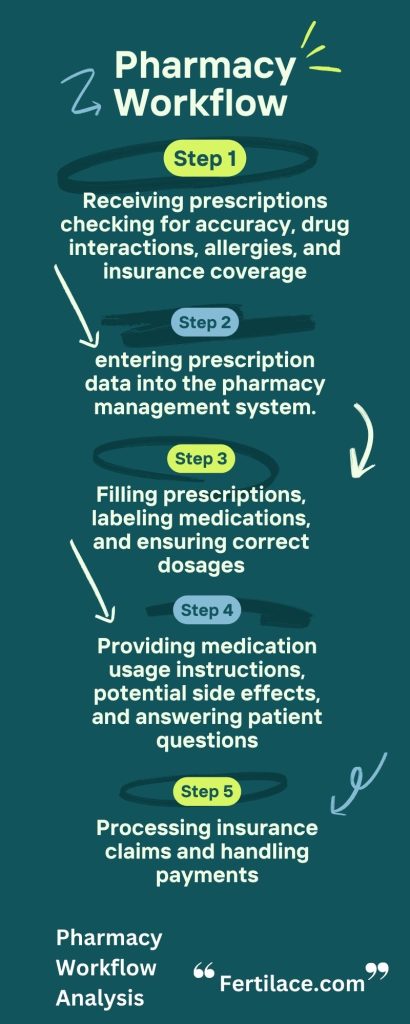PEBC evaluating exam practice questions list
Question 1: What is the mechanism of action of Pioglitazone?
A. PPAR γ agonist
B. PPAR γ antagoinst
C. PPARα agonist
D. PPARα agonist
E. PPAR γ antagonist and PPARα agonist
Click here to see the answer
Answer: A
PPARγ agonist examples – Pioglitazone and rosiglitazone. Both are thiazolidinediones.
Pioglitazone also has PPARα agonist activity but to a minimal extent. Its anti-diabetic action however comes only from PPARγ agonist activity.
PPAR (Peroxisome Proliferator-activated receptor) activates nuclear genes involved in glucose and lipid metabolism and adipocyte differentiation.
Comparison of PPARγ and PPARα agonists for quick revision
| PPARγ agonist | PPARα agonist | |
| Examples | Pioglitazone and rosiglitazone | Gemfibrozil, Benzafibrate, and Fenofibrate |
| Use | Antidiabetic | Antihyperlipidemic |
| Mechanism of action | Modulates the transcription of the genes involved in the control of glucose and lipid metabolism in the muscle, adipose tissue, and the liver | PPAR-α stimulates the uptake of fatty acids by cells and catabolism by beta-oxidation pathways. This cause a reduction in fatty acid and TG synthesis, leading to decreased secretion of TG-rich VLDL particles |
| Side effects | – Weight gain, edema, dyslipidemia – Pioglitazone increases the risk of bladder cancer and also reduces LDL (due to PPARα agonist activity) | – Increased excretion of cholesterol in bile leading to cholelithiasis which is a predisposing factor for gall stone. Discontinue the drug if tested positive. – Increased risk of Myopathy when combined with statins. – Gemfibrozil and Colchicine increases myopathy while Fenofibrate has uricosuric effect. |
Question 2: What is workflow analysis?
A. The process of identifying and assessing the needs of an organization.
B. The process of designing and evaluating the tasks and activities within a work process.
C. The study of individual worker performance.
D. The implementation of new technologies in a business.
E. The creation of marketing strategies to enhance product sales.
Click here to see the answer
Answer: B

What is workflow analysis?
Workflow analysis is a process of evaluating the sequence of tasks and activities that produce a specific workflow outcome.
Reasons to do a workflow analysis
- To identify bottlenecks, redundancies, and waste
- To improve efficiency and profitability
- To identify staffing needs
- To standardize the process and reduce the risk of errors or minimize errors
- To improve customer experience
How to conduct workflow analysis?
- Identify and evaluate the sequence of steps
- Gather data
- Analyze data
- Map the current workflow
- Implement change
The image shows a typical workflow analysis in a pharmacy for a single customer.
Question 3: A community pharmacy has recently seen growth in customer footfall and the manager is interviewing potential candidates for pharmacy assistant duties. which of the following is the most appropriate question to ask?
A. Do you have a second job?
B. Do you drive?
C. How many kids do you have?
D. Have you committed any crime?
E. Will you be bringing your luch at work?
Click here to see the answer
Answer: D
Hint: If you check the remaining options, it has nothing to do with the pharmacy business itself and are more personal in nature. So the best option is D. Even though background check is usually done by businesses before hiring an individual, this question can still be asked in an interview to evaluate honesty and integrity of the person.
Question 4: Tadalafil use is contraindicated in which of the following conditions?
A. Hepatic impairment
B. HLA-B 1701 allele
C. Renal impairment
D. Elevated pancreatic enzymes
E. Cystic fibrosis
Click here to see the answer
Answer: A
Quick revision
Examples of PDE5 inhibitors: Sildenafil, Vardenafil, and Tadalafil.
Side effects: Priapism and blue-green vision.
The duration of action of Tadalafil is 35 hours and should not be taken more than every 2nd day. Tadalafil is not influenced by food and hence can be taken with or without food.
Question 5: JT is prescribed Terazosin for Benign Prostatic Hyperplasia. When can he expect the symptoms to start subsiding?
A. 15 minutes
B. 2 weeks
C. 24 hours
D. 1-2 weeks
E. 4-6 weeks
Click here to see the answer
Answer: B
| Terazosin | Benign Prostatic Hyperplasia | Hypertension |
| Onset of action | 2 weeks | 15 minutes |
| Duration of action | 24 hours | 24 hours |
| Peak response | 4 – 6 weeks | 2 – 3 hours |
Question 6: JT is a young woman who was recently diagnosed with depression. She does not have any other medical conditions. About a year ago, she suffered a minor fracture in her left ankle. Her doctor prescribed her Sertraline for depression. Answer the following questions based on the information given.
Question 6.1: What is the mechanism of action of Sertraline?
A. Selective Serotonin Reuptake Promoter
B. Serotonin Norepinephrine reuptake inhibitor
C. Serotonin modulator
D. Selective Serotonin Reuptake Inhibitor
E. Serotonin Alpha 2 receptor inhibitor
Click here to see the answer
Answer: D
Tip: Read the options carefully. Option A says ‘promoter’.
Question 6.2: When can JT expect to see a change in her symptoms?
A. 1-2 weeks
B. 24 - 48 hours
C. 4 - 6 weeks
D. 3 months
E. within 24 hours
Click here to see the answer
Answer: A
All antidepressants effect begin from 2 weeks, and optimal effect in 4 – 6 weeks
Question 6.3: When can JT expect to see a mood change effect?
A. 1-2 weeks
B. 24 - 48 hours
C. 4 - 6 weeks
D. 3 months
E. within 24 hours
Click here to see the answer
Answer: C
Insomnia is 1-2 weeks and mood change effect is 4 to 6 weeks
Question 6.4: JT comes to pharmacy with a new prescription of clarithromycin for skin infection. What is the pharmacist’s concern?
A. Torsade de pointes - do not dispense. Call doctor to change the drug
B. No problem - dispense the prescription
C. Separate both drugs by 2 hours
D. Take Sertraline in morning and Clarithromycin in evening
E. Take Clarithromycin with iron supplement
Click here to see the answer
Answer: A
Question 7: A 55-year-old woman is administered a single IV dose of an anxiolytic drug for a medical procedure. The drug has a half-life of 4 hours. You are consulted 12 hours later to determine whether it is safe to administer another sedative.
What percentage of the original drug remains in her system at this time?
A. 12.5%
B. 25%
C. 50%
D. 75%
E. 6.25%
Click here to see the answer
Answer: A
Explanation:
After 3 half-lives (12 hrs):
100% → 50% → 25% → 12.5%
Question 8: Beta amyloid plaques are found in which dementia disease?
A. Parkinson's dementia
B. Alzheimer's disease
C. Multiple sclerosis
D. Lewy body dementia
E. Vascular dementia
Click here to see the answer
Answer: B
Quick revision
Alzheimer’s disease: Accumulation of clumps of protein as beta-amyloid plaques and Tao tangles. Mnemonic is BAT (B = beta-amyloid plaques, A = Alzheimer’s disease, and T = Tao tangles).
Lewy bodies or alpha-synuclein proteins are associated with Parkinson’s or Lewy body dementia.
Question 9: Out of the following, which is the best option to manage delirium in a patient with Alzheimer’s disease?
A. Haloperidol
B. Rivastigmine
C. Galantamine
D. Donepezil
E. Memantine
Click here to see the answer
Answer: D
Notes:

Delirium
Delirium is a change in mental abilities. A person suffering from delirium is often confused and lacks awareness about the surroundings.
Disorientation, memory loss, poor concentration, sleepiness, hallucination, and agitation or restlessness are some of the symptoms.
Mnemonic for causes of Delirium “MOVE STUPID”.
M – Metabolic (electrolyte imbalance, hypoglycemia, liver or kidney failure) O – Oxygen (hypoxia, anemia, carbon monoxide poisoning) V – Vascular (stroke, hypertensive encephalopathy) E – Endocrine (thyroid, adrenal, glucose disturbances)
S – Seizures (postictal state) T – Trauma (head injury, surgery) U – Uremia (renal failure) P – Psychiatric (mania, depression) I – Infection (systemic or CNS) D – Drugs (new medications, withdrawal, intoxication)
Question 10: A 70-kg man receives 500 mg of a drug as an IV bolus. After distribution, the plasma concentration is measured at 10 mg/L.
What is the volume of distribution (Vd)?
A. 10 L
B. 25 L
C. 50 L
D. 100 L
E. 200 L
Click here to see the answer
Answer: C
Explanation:
Vd = Dose / Plasma Concentration = 500 mg / 10 mg/L = 50 L
Question 11: A patient on oral contraceptives begins taking carbamazepine for seizures. A month later, she reports a missed period and a positive pregnancy test.
What best explains this interaction?
A. Carbamazepine inhibits estrogen metabolism
B. Oral contraceptives decrease carbamazepine absorption
C. Carbamazepine induces hepatic enzymes that reduce estrogen levels
D. Carbamazepine binds estrogen receptors
E. Estrogen increases carbamazepine excretion
Click here to see the answer
Answer: C
Explanation:
Carbamazepine is a CYP450 inducer, increasing metabolism of estrogens and reducing the efficacy of oral contraceptives.
Question 12: A 32-year-old woman being treated for schizophrenia with risperidone reports breast discharge and irregular periods.
Which mechanism is most likely responsible for her symptoms?
A. Serotonin receptor blockade
B. Inhibition of dopamine in the mesolimbic pathway
C. Dopamine blockade in the tuberoinfundibular pathway
D. Cholinergic antagonism
E. Alpha-2 blockade
Click here to see the answer
Answer: C
Antipsychotics like risperidone block dopamine D2 receptors in the tuberoinfundibular pathway, increasing prolactin levels (hyperprolactinemia).
Question 13: Why is it advisable to apply pressure to the nasal bridge after instilling an eye drop?
A. To minimize systemic absorption of the drug
B. To minimize irritation of the eyelids
C. Helps with the permeation of the drug through Cornea
D. To increase systemic absorption of the drug for maximum effect
E. It is not recommended to apply pressure to the nasal bridge after instilling an eye drop
Click here to see the answer
Answer: A
Question 14: What is the mechanism of action of Febuxostat?
A. 5 alpha reductase type II inhibitor
B. 5 alpha reductase type II promoter
C. Incretin analog
D. Xanthine oxidase inhibitor
E. DOPA decarboxylase inhibitor
Click here to see the answer
Answer: D
Quick Revision:
Allopurinol and Febuxostat – both are Xanthine oxidase inhibitors. If a person is allergic to Allopurinol, than he/she can be given Febuxostat and vice versa. This is because both the drugs are chemically distinct from each other.
Contraindicated with Azathioprine, Mercaptopurine, and Theophylline.
Febuxostat is only used if Allopurinol is not suitable.
Question 15: A 64-year-old man with type 2 diabetes and chronic kidney disease (eGFR 25 mL/min/1.73 m²) is taking metformin. He is brought to the ER with confusion, weakness, and lab findings suggestive of lactic acidosis.
What is the most likely cause of this presentation?
A. Diabetic ketoacidosis
B. Hyperosmolar hyperglycemic state
C. Metformin-induced lactic acidosis
D. Uremic encephalopathy
E. Sepsis-induced acidosis
Click here to see the answer
Answer: C
Metformin is contraindicated in patients with significant renal impairment (eGFR <30 mL/min) due to the risk of lactic acidosis, a rare but potentially fatal side effect.
Question 16: Which of the following groups of individuals are not covered by the federal government?
A. Ontario police
B. Natives and first nation
C. Inmates
D. Refugees
E. RCMP
Click here to see the answer
Answer: A
Question 17: Which of the following statement is true about INR?
A. Enoxaparin has the highest impact on INR
B. aPTT should be monitored with Warfarin
C. INR in therapeutic range means there is no bleeding
D. Idarucizumab is the drug of choice to bring INR in therapeutic range
E. Warfarin is the drug of choice to bring INR in therapeutic range
Click here to see the answer
Answer: C
Question 18: A 45-year-old man is being treated for tuberculosis with a regimen including isoniazid. He presents with tingling and numbness in his hands and feet after 6 weeks of therapy.
Which of the following best explains this side effect?
A. Vitamin B6 deficiency
B. Drug-induced myasthenia
C. Hypocalcemia
D. Lead toxicity
E. Hyperkalemia
Click here to see the answer
Answer: A
Isoniazid interferes with pyridoxine (vitamin B6) metabolism, leading to peripheral neuropathy. Prophylactic supplementation with pyridoxine is recommended.
Question 19: A 35-year-old man with treatment-resistant schizophrenia is started on clozapine. After 4 weeks of therapy, a routine CBC shows a WBC count of 2,000/mm³ and ANC of 900/mm³. He is asymptomatic.
What is the most likely explanation for this lab result?
A. Viral infection
B. Bone marrow metastasis
C. Clozapine-induced agranulocytosis
D. Nutritional deficiency
E. Autoimmune neutropenia
Click here to see the answer
Answer: C
Clozapine carries a risk of agranulocytosis, a serious and potentially fatal drop in white blood cells. This requires regular blood monitoring (weekly initially) and drug discontinuation.
Question 20: A 70-year-old male with a severe bacterial infection requires immediate antibiotic coverage with a drug that follows linear pharmacokinetics. The target plasma concentration for therapeutic effect is 5 mg/L, and the drug has a volume of distribution (Vd) of 40 L. The prescriber asks you to calculate the loading dose, assuming IV administration and 100% bioavailability.
What is the appropriate loading dose to quickly reach the desired plasma concentration?
A. 100 mg
B. 150 mg
C. 200 mg
D. 300 mg
E. 400 mg
Click here to see the answer
Answer: E
Explanation:
Loading dose = Vd × Target concentration
= 40 L × 5 mg/L = 200 mg
With 100% IV bioavailability, 200 mg is sufficient.
📝 However, if the bioavailability were 50% (e.g., oral), you’d need 400 mg to achieve the same plasma concentration.

evaluating exam PEBC questions – Question Set #2
Also read this post. It has more questions with answers, mnemonics, and some quick revision notes.
Feel free to ask any questions in the comments section below.
Join Our Facebook Group
Questions posted every day to help you succeed.
PEBC Evaluating Exam PreparationPEBC Evaluating exam sample questions pdf link
If you have any questions, please ask them in the comments section.

Question 17: Why is E not the correct answer?
even if INR is in range, the patient can still experience bleeding; however, warfarin is the DOC to keep INR in range.
Hi Ash,
Warfarin is used as anticoagulant and INR is it’s monitoring parameter.
INR is not a therapeutic target or a treatment objective for warfarin.
Hope this helps.